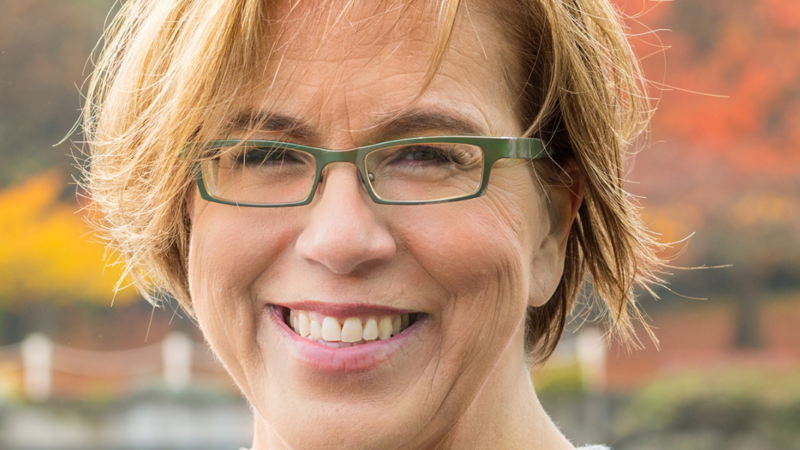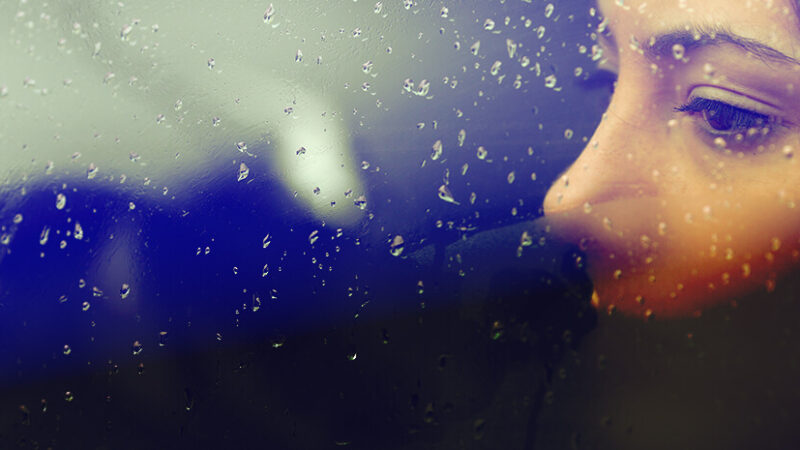Meet the author of . . . P.S. I Love You More Than Tuna
The Author
Sarah Chauncey is the coauthor of P.S. I Love You More Than Tuna along with illustrator, Francis Tremblay, coming October, 2020. She has written and edited for nearly every medium over the past three decades, from print to television to digital. Her writing has been featured on EckhartTolle.com and Modern Loss, as well as in Lion’s Roar and Canadian Living. She lives on Vancouver Island in British Columbia, where she divides her time between writing, editing nonfiction, and walking in nature. Learn more at sarahchauncey.com.
The Book

Our cats occupy a unique space in our hearts. When they’re gone, the loss can be devastating, the grief profound.
P.S. I Love You More Than Tuna gives us an opportunity to give friends, loved ones, or ourselves tangible comfort during the grieving period, when so many of us feel isolated and misunderstood after a beloved pet dies.
Send us a photo of your sacred space.

First Nation, Saysutshun Newcastle Island is an ancient forest and marine provincial park. Saysutshun, I’m told, means “training or preparation ground,” and indeed, for millennia before colonization, the Snuneymuxw brought healers to this small island to train “mentally, physically, and spiritually.” I knew none of this history when I first began walking long stretches of the uninhabited island’s 13.6 miles of trails. I only knew that the island seemed to lift away anything that wasn’t essential, easing my mind and making way for creative ideas to flow. I’d walk a bit, then sit and meditate, write for a while, then walk some more. This bench, under a circle of seven trees, became my favorite writing and meditation spot. The moss-covered trees became my friends, teaching me to stay rooted when things around me change. As I wrote in a 2016 essay about the island, “I have become a literal tree-hugger, and even—when nobody is looking—a tree-kisser.”
What was your favorite book as a child?

I was a total bookworm as a child. Instead of playing games at recess, I preferred to curl up under my desk and read. Of all the books I read—from every Encyclopedia Brown to Freaky Friday to The Short Stories of Ernest Hemingway (I was a precocious kid), the book with the most enduring impact was also the simplest: Harold and the Purple Crayon. I was enchanted by Harold’s adventures, amazed by his ability to draw his way out of every obstacle and ultimately find his way home. Long before I began seeing this as a metaphor for creativity (and life!), this story appealed to me. Fifty years later, I continue to find new layers of meaning in this little book. It’s a simple yet profound testament to the power of imagination and creativity.
What is one unexpected thing or habit that inspires your writing practice?
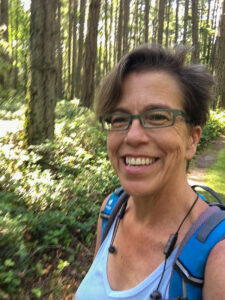

Walking in nature is my creative “secret sauce” and the central practice to my writing. Several years ago, I realized that although my role in this world is as a writer, my job is to bring myself back into presence, over and over, to get into a place where words can flow through me. I walk to get out of my mind and into my body. I come into fierce presence by noticing the rain on my face, salal berries ripening into deep blue, or the texture of earth beneath my feet. When my body is occupied by walking, ideas bubble up from my subconscious. Whether I’m looking for ways to trim an over-long essay or searching for words to evoke a hard-to-articulate experience, as soon as my legs find their rhythm, ideas begin to flow.
Learn More

Sounds True | Amazon | Barnes&Noble | Bookshop | Indiebound
A Compassionate Approach to Recognizing Trauma Bonding
The theory of attachment styles became popularized in the last 15 years; now trauma is (finally) getting recognition from the mainstream. But most of us aren’t yet clear about the very deep connection that exists between trauma and certain attachment styles. This is where the concept of “trauma bonding” comes into play.
What is trauma bonding?
Trauma bonding happens when we get attached to someone who is often neglectful or abusive (physically, emotionally, or psychologically), but is also occasionally kind. When we’re attached to someone like this, we typically explain away their bad behavior, claiming “they had a hard day” or “it was my fault they got mad at me.” Rationalization offers us a semblance of protection from seeing the reality of the danger and inequality in the relationship.
It’s common to form a trauma bonding pattern when one of our parents or partners is erratic, abusive, or absent. But often the template of trauma bonding gets applied to many of our relationships.
Signs You Have a Trauma Bond
If you’re in a trauma bond relationship right now, you may make dramatic or sudden life changes or even great sacrifices for the sake of the relationship to the detriment of outside friendships, family, and your autonomy.
Even if the original, harmful relationship is now a thing of the past (e.g., you moved out, you broke up with the manipulative partner, or your former abuser has died), the trauma bonding pattern may remain embedded until you learn how to consciously uproot it.
Signs this trauma bonding template is still present can include:
- Emotionally caretaking others while your own needs and desires are swept under the rug
- Acting as if you continually need to prove your worth to others (and yourself)
- Avoiding being authentic or open because it feels like too great a risk
- Feeling frustrated, exhausted, hypervigilant, or unsupported in relationships due to perceiving pressure coming from others
- A pattern of feeling disempowered around coworkers, a spouse, or family members
What Causes Trauma Bonding?
When we experience stress and feel (consciously or unconsciously) we’re in danger, our sympathetic nervous system activates the “fight or flight” response. As long as that circuitry is activated, we’re not able to plan for the future or assess risks very clearly; our nervous system gets locked in survival mode to get through the stress. In other words, it’s not your fault that you can’t see what’s going on.
The challenge is heightened because of the intermittent reinforcement that characterizes trauma bonds: we receive occasional comfort or love in the relationship, which is sprinkled on top of the typical abuse or neglect. Like other forms of intermittent reinforcement, it’s an addictive combination to be exposed to, and one that hampers our ability to understand we’re being mistreated.
Because we focus so intently on the positive reinforcement we experience from time to time with our abuser, we contort ourselves psychologically to try to get the love as often as we can. Once this pattern is established, it is naturally hard to stop engaging it—again, because of the way our nervous system developed. Getting outside support to stop the cycle is an act of strength and wisdom.
Should You Break a Trauma Bond?
If you’re in clear and real danger, it is most important to find a way to safely remove yourself from harm. Over the longer term, the best approach is learning to create healthy relational boundaries so as not to form or reform trauma bonds.
Once you start to become aware of the trauma bonding pattern operating in you, you can recognize and address the behaviors it causes. You can uncover and listen to your buried needs and wants, and reclaim your personal power and freedom. Doing this can help you shift your nervous system out of past trauma bonding tendencies and toward new possibilities, including nurturing mutual relationships with people who are interested in your happiness and will support your thriving.
To find out more about healing traumas (including trauma bonding), please check out The Healing Trauma Program, hosted by Jeffrey Rutstein, PsyD, CHT.
An Intimate Guide to Awakening Your Erotic Life
Dear friends,
I’ve always said that if we could solve just one problem in our lives, coming to terms with our sexual selves would solve all of the others. Whether we are actively sexual or not, the deepest aspects of our identity are shaped by our erotic souls.
Becoming intimate with our sexuality is the key to fully engaging with our lives and finding physical and emotional well-being . . . which sounds great, but how do you begin to move in this direction?
I have been married to the same man for over 30 years, and I can tell you that the journey to sexual wholeness is not easy. I remember a moment when sexual wounds had all but destroyed our marriage. And then something totally unexpected happened—a truce that gave us both the courage to turn towards our sex life and each other. It was the beginning of sex that works in my own life.
In my new book, Sex That Works, I share stories from my own erotic transformation, from the couples with whom I’ve worked with as a professional loveologist, and from my research and ongoing conversations about relationships, intimacy, and sex as the founder of Good Clean Love, maker of organic products for sexual health. To help you dig in and understand your own intimate story, I offer practical exercises for building skills to reclaim intimacy, renew curiosity, and ultimately realize your true erotic potential.
Think of this book as a road map for your journey back to your own erotic self—one that will allow you to reach into the really tender places and encourage your truth to flow freely. It’s been an honor to spark this kind of inner dialogue for women, and my hope is that you will find that reading Sex That Works is like talking to a dear friend late at night over a warm cup of tea.
Wishing you wellness on your sexual journey,
How Reframing Conflicts Can Actually Help Your Relationship
In the Internal Family Systems model, the practice of speaking for, rather than from, parts when they are triggered is an important aspect of Self-leadership. When people receive a message from you, it has two components: the content (the actual words) and the energy behind the words. When your protective parts are upset and speak directly to another person, invariably they will trigger parts in the other. When, on the other hand, you listen to your protectors and then speak for them, from your Self, the message is received in a very different way, even if you use the same words that your parts are saying. Your words lose their judgmental sting or their off-putting desperation and coerciveness. Instead, your respect and compassion for the other person will be heard in addition to the courage of your convictions.
Self energy has a soothing effect on any parts it touches, whether they are in you or in another person. When your parts trust that you will speak for them, they feel less driven to take over and explode at people. What they really want is to have a voice—to be listened to by you and to have their position represented to others.
Practice: SELF-LEADERSHIP AS A WAY OF INTERACTING IN A CONFLICT
These practices—remaining the “I” in the storm or the empty vessel, and speaking for rather than from your parts—can be combined into a general way of relating as a couple when you have conflict. When you begin to fight, each of you can try the following:
- Pause
- Focus inside and find the parts that are triggered
- Ask those parts to relax and let you speak for them
- Tell your partner about what you found inside (speak for your parts), and
- Listen to your partner from your open-hearted Self
When a couple is embattled and each focuses inside, as in step 2, usually they only hear from their protectors. If it feels safe enough, moving an extra step toward vulnerability can reap big rewards. That step involves staying inside long enough to learn about the exiles that your protectors are guarding, and then telling your partner about these vulnerable parts. In most cases, when one partner has the courage to reveal the vulnerability that drives their protectiveness, the atmosphere immediately softens and the couple shifts toward Self-to-Self communication.
This is an excerpt from You Are the One You’ve Been Waiting For: Applying Internal Family Systems to Intimate Relationships by Richard C. Schwartz, PhD.

Learn More
Amazon | Barnes & Noble | Bookshop | Sounds True
What Triggers Your Emotional Inflammation?
It’s time to start unraveling the mystery of you by exploring your current state of mind. Think of this as an adventure, a path toward greater self-understanding and self-compassion—and an expanded appreciation of the complexity of you. To get a sense of the modern-world issues that tend to rile or upset you, put on your imaginary miner’s hat and head into the depths of your mind to see what lies below your conscious awareness. (You may want to do this with a trusted friend or partner.)
Consider your true feelings about the following subjects, without letting preconceived ideas about the right or politically correct way to think or feel about these subjects guide you; simply let your real feelings flow out of you in a free-association style.
Have a journal and a piece of paper ready. As you read the following words and phrases, jot down the first three to five words or phrases that come to your mind in response (don’t edit or change what occurs to you instinctively):
- • Climate crises
- • Me Too scandals
- • Human rights abuses (on a grand scale)
- • Political corruption
- • Racial, religious, gender, or political discrimination
- • Environmental threats (toxins in our midst)
- • Volatile financial circumstances
- • Natural disasters (wildfires, floods, storms)
- • International threats
- • Social divisiveness in this country
- • Hate crimes
- • Nuclear weapons threats
- • Gun violence
If other current events are triggering emotional inflammation for you, write them down in your journal or on a piece of paper.

Don’t worry if you feel put on the spot, thought-tied, and unable to come up with the right words to describe how you feel in response to the prompts listed above. Take a deep breath, exhale, and peruse this sample response. Rather than letting this person’s examples sway or influence you, try to use them as inspiration to unlock the floodgates on your true feelings.
Now it’s your turn!
After you’ve completed your list, assign a value to each of these concerns in terms of their potency for you on a scale of 0 to 3 (with 0 being neutral and 3 being intense). Do this quickly so you don’t have too much time to think about it or second-guess your instinctive responses. Once you’ve finished this, place these triggers into a hierarchical list from a potency of 3 to 0, based on how they affect or resonate with you. This will give you a sense of what is likely to get you riled up these days.
If you want to dig a bit deeper, think about the way you responded to the descriptions of certain triggers—that you felt disgusted, violated, sad, and threatened when you thought about Me Too scandals, for example—then consider whether any situations from your past have evoked similar feelings for you. As you may see, emotional injuries or reverberations from the past can make you vulnerable to similar insults and assaults in the present. It’s almost as if you have an emotional ember lying beneath your consciousness, and it’s predisposed to flaring up from time to time. If you hear a single piece of distressing news and find yourself reacting surprisingly strongly to it, think about what else may be crashing around you or whether the news has somehow opened Pandora’s box and exposed you to a deep abyss of other fears and worries. Or it may be that a more superficial emotional injury is on the way to healing but then the scab gets ripped off and the wound bleeds again when another upsetting event occurs.
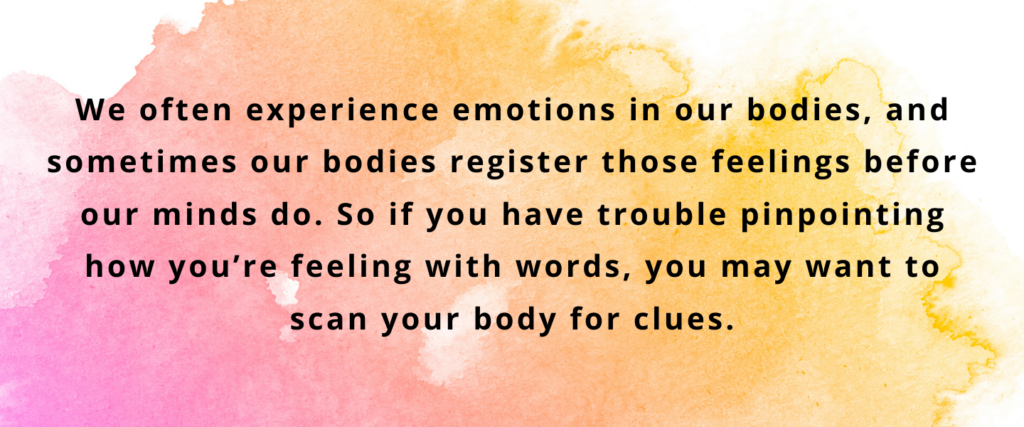
As it happens, we often experience emotions in our bodies, and sometimes our bodies register those feelings before our minds do. So if you have trouble pinpointing how you’re feeling with words, you may want to scan your body for clues. When researchers in Finland performed a series of cross-cultural studies with 701 people from West European and East Asian cultures, they had the participants view various words, stories, movies, or facial expressions, then color specific regions on silhouettes of bodies where they felt activity increasing or decreasing while they viewed each stimulus. This exercise in mapping bodily sensations in response to emotions revealed that basic emotions—including anger, fear, disgust, happiness, sadness, and surprise—were associated with sensations of elevated activity in the upper chest, which likely reflects changes in breathing and heart rate. Increased sensations in the arms and torso were associated with anger. Decreased sensations in the arms and legs corresponded to sadness. And increased sensations in the gut (the digestive system) and throat were found primarily with disgust. The most fascinating revelation was that these effects rang true among people cross-culturally.
So if you have a mental block that makes it difficult to recognize your emotional triggers (which some people do, in a subconscious effort to protect themselves from emotional discomfort), paying attention to your bodily sensations can give you clues about what you’re experiencing. Even if you are highly attuned to your emotional reactions, sometimes they can sneak up on you, and you might experience a particular bodily sensation before you are aware of the actual trigger or your response to it. That’s because we all have blind spots to reflexive emotional states we’re susceptible to experiencing.
This is an excerpt from Emotional Inflammation: Discover Your Triggers and Reclaim Your Equilibrium During Anxious Times by Lise Van Susteren, MD, and Stacey Colino.
Buy your copy of Emotional Inflammation at your favorite bookseller!
Sounds True | Amazon | Barnes & Noble | Bookshop
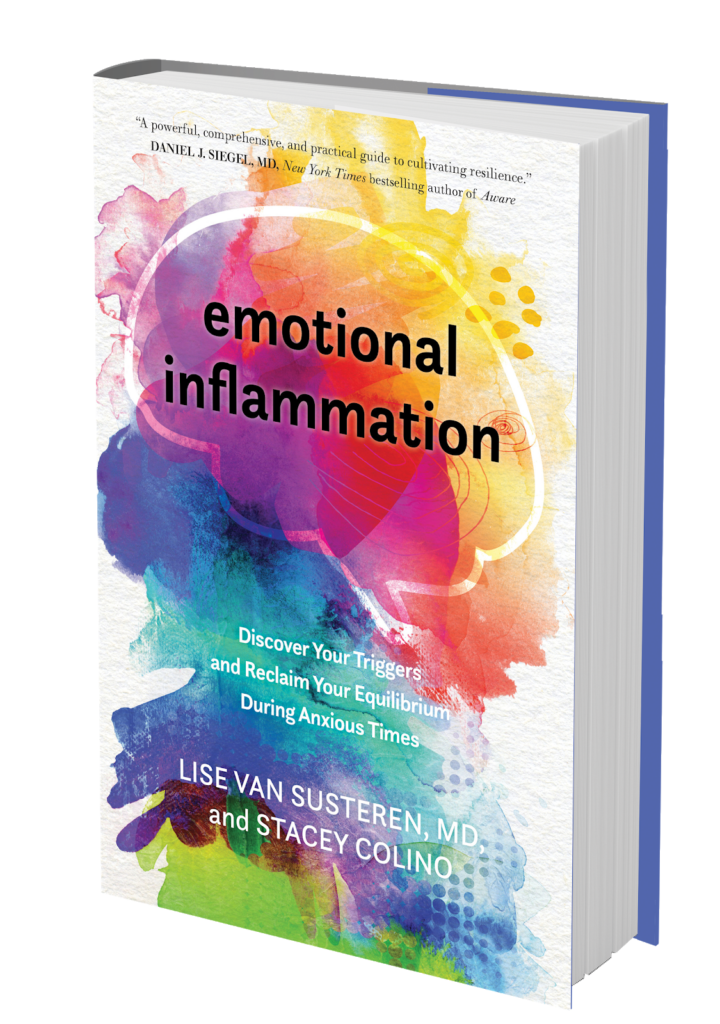
Body and mind are one… with Thich Nhat Hanh
Enjoy this lovely video from our dear friend, Thich Nhat Hanh, recorded at the Body and Mind are One retreat in Colorado in the summer of 2011. There is something about Thich Nhat Hanh’s presence that just allows for an outpouring of mindfulness, love, kindness, and compassion. When we at Sounds True reflect upon mindfulness, we think immediately of our dear friend, Thich Nhat Hanh, and how fortunate we are to have the opportunity to work with him, something we’ve been blessed with over the last 20+ years. In so many ways, he embodies the work we’re doing here: our values, vision, and mission.
The beautiful and inspiring footage we gathered from Body and Mind are One was edited into a seven-hour online course, which you can enjoy from the comfort of your own home, on a schedule that works for you. More than an ordinary training course in mindfulness, Body and Mind Are One is at once a living transmission of insight from this beloved Zen master and a practical teaching series covering fundamental principles for a joyful life.
